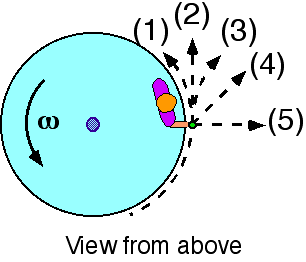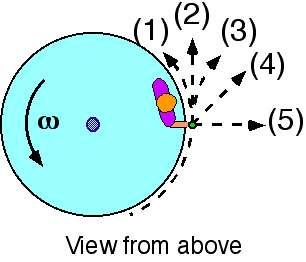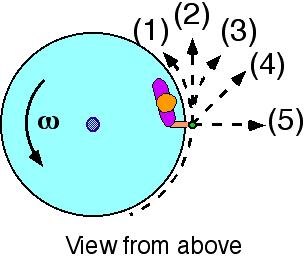Goal: Recognize physical conditions under which conservation principles hold.
Source: UMPERG-ctqpe134

A
child is standing at the rim of a rotating disk holding a rock. The
disk rotates without friction. The rock is dropped at the instant
shown. What quantities are conserved during this process.
- Only angular momentum is conserved.
- Only mechanical energy is conserved.
- Both angular momentum and mechanical energy are conserved.
- Neither is conserved.
- cannot be determined.


Commentary:
Answer
(3) is the correct response if the rock is simply dropped. Some
students may fail to include the rock as part of the system after it is
dropped.
Background
Objects traveling in a straight line do have angular momentum with
respect to any origin that is not on the path of the object. The rock
does not cease to have angular momentum with respect to the center of
the disk when it is dropped. Although the angular momentum and energy of
the rock will change as the rock falls, its angular momentum and energy
just after it is dropped are the same as just before.
Questions to Reveal Student Reasoning
Does the rock have angular momentum (or energy) just before it is
dropped? just after it is dropped?
If energy (angular momentum) is lost, what happens to it?
Changes in angular momentum are caused by a net torque. What torques
act on the system?
Suggestions
Have students relate their answer to this question to the previous one.